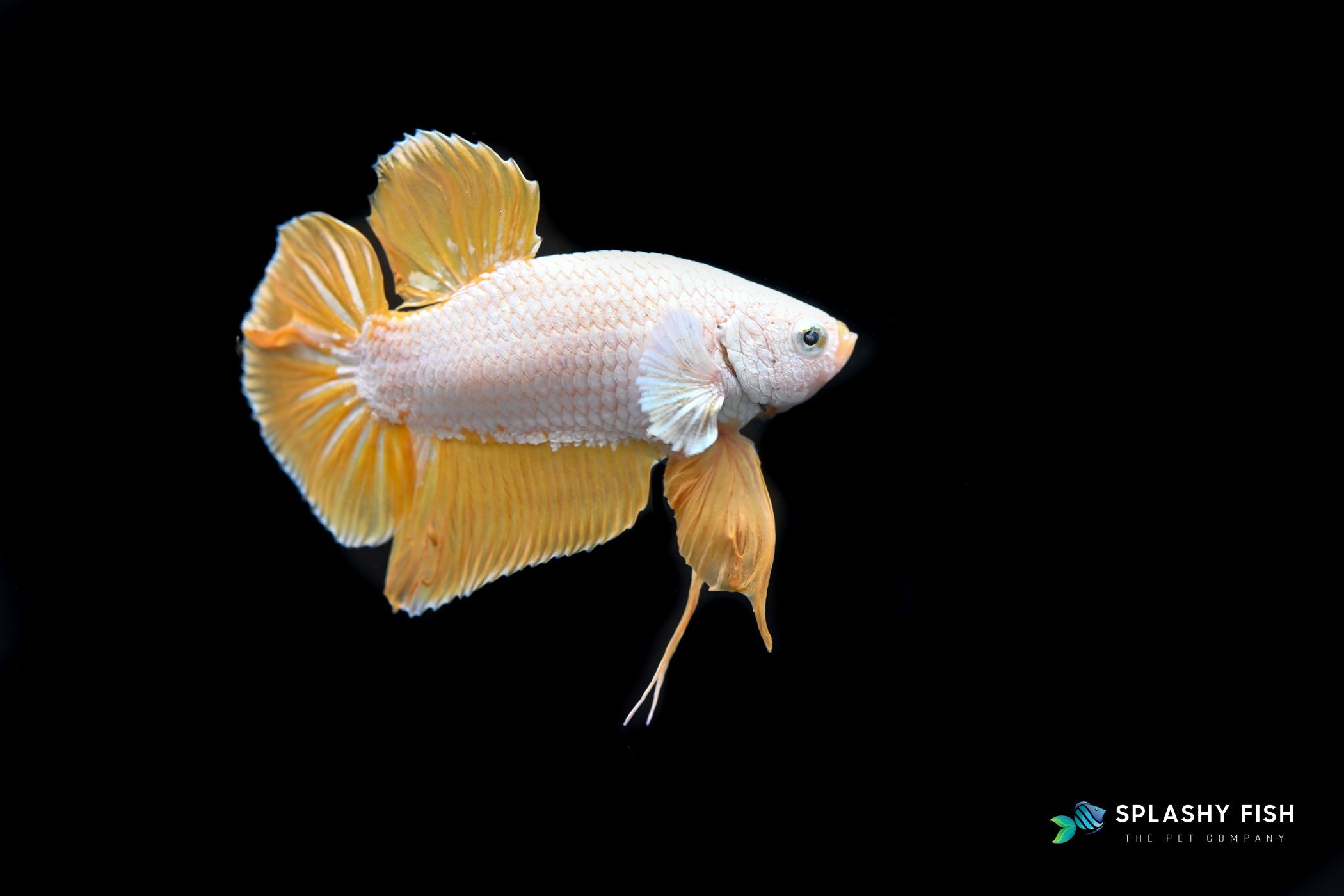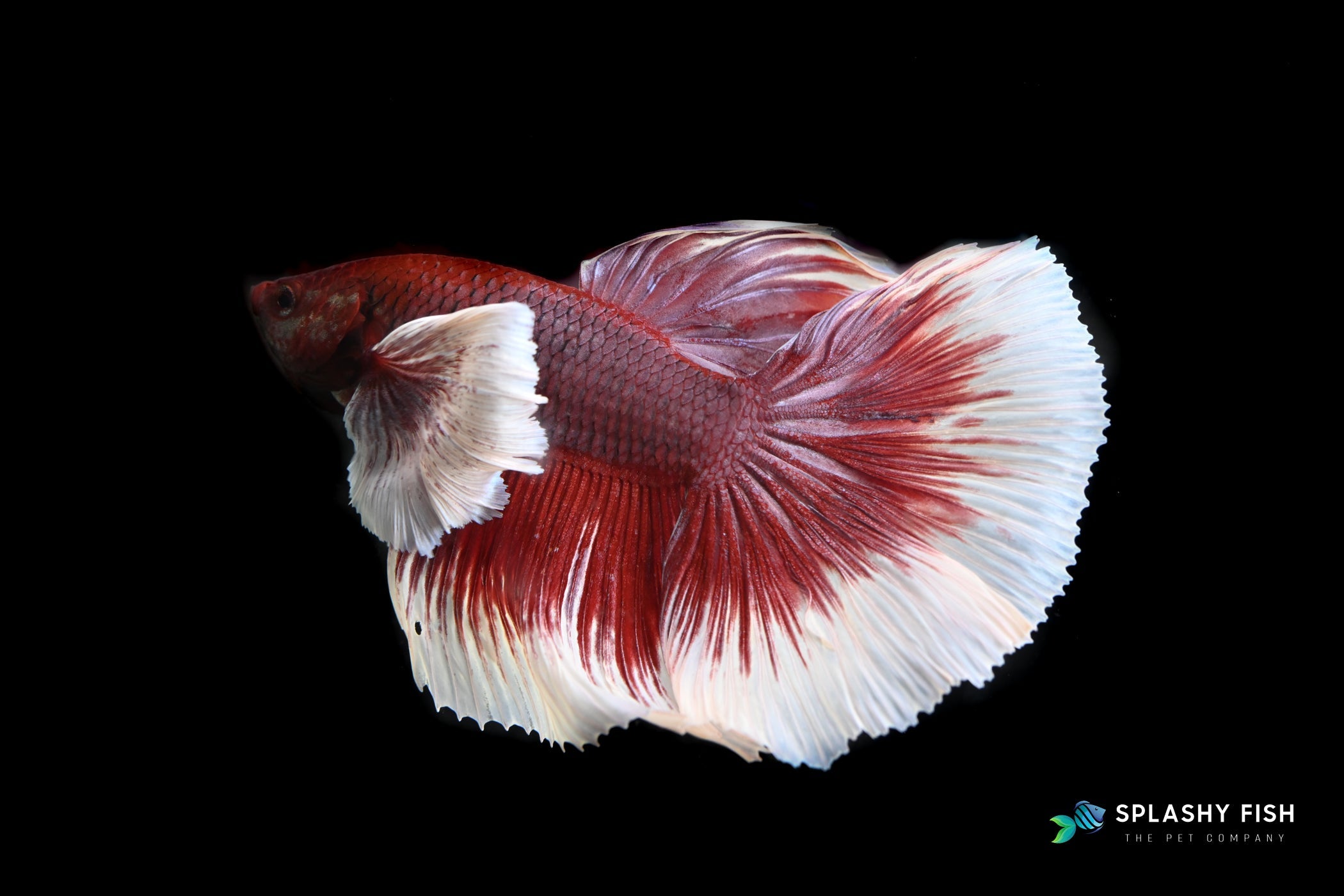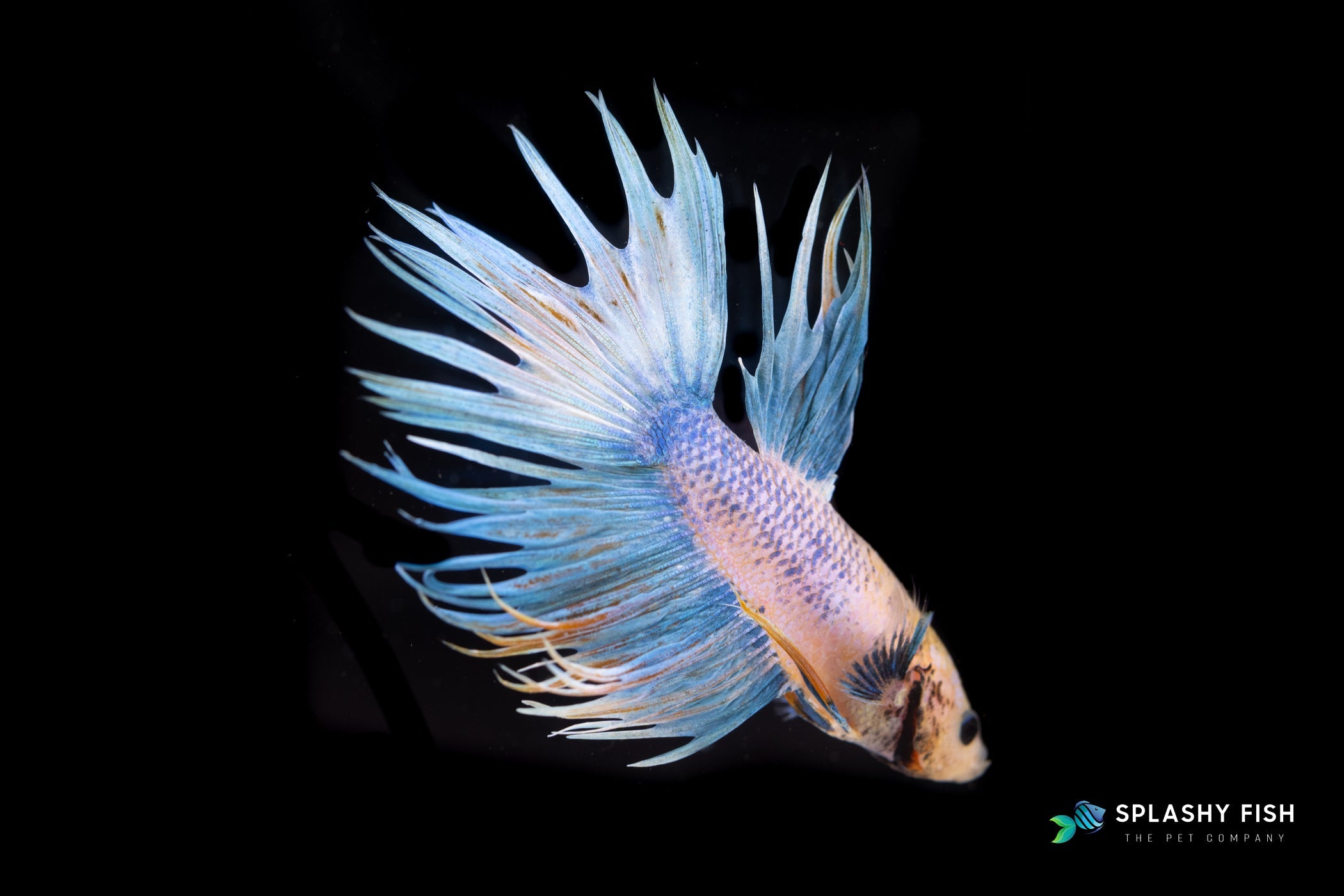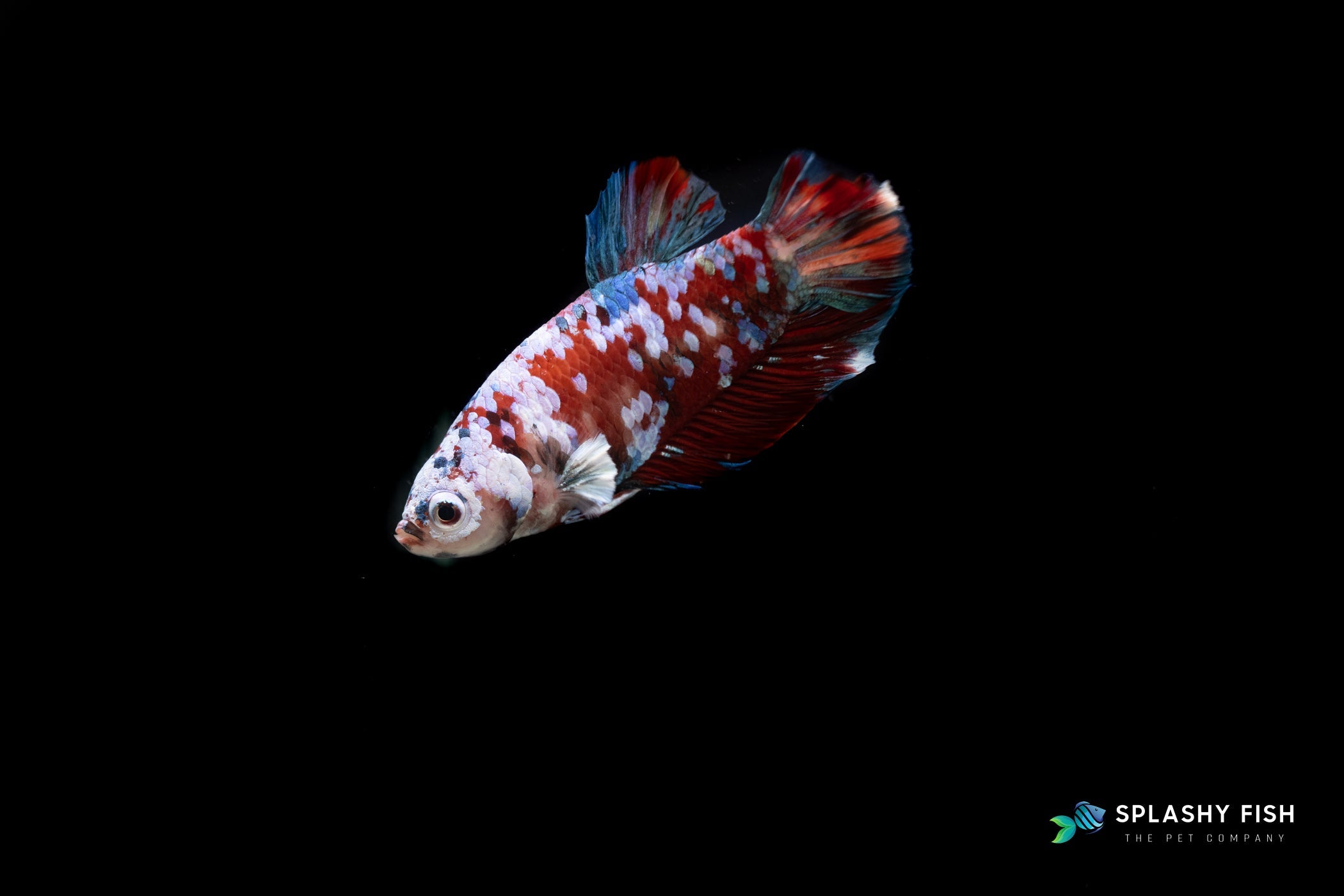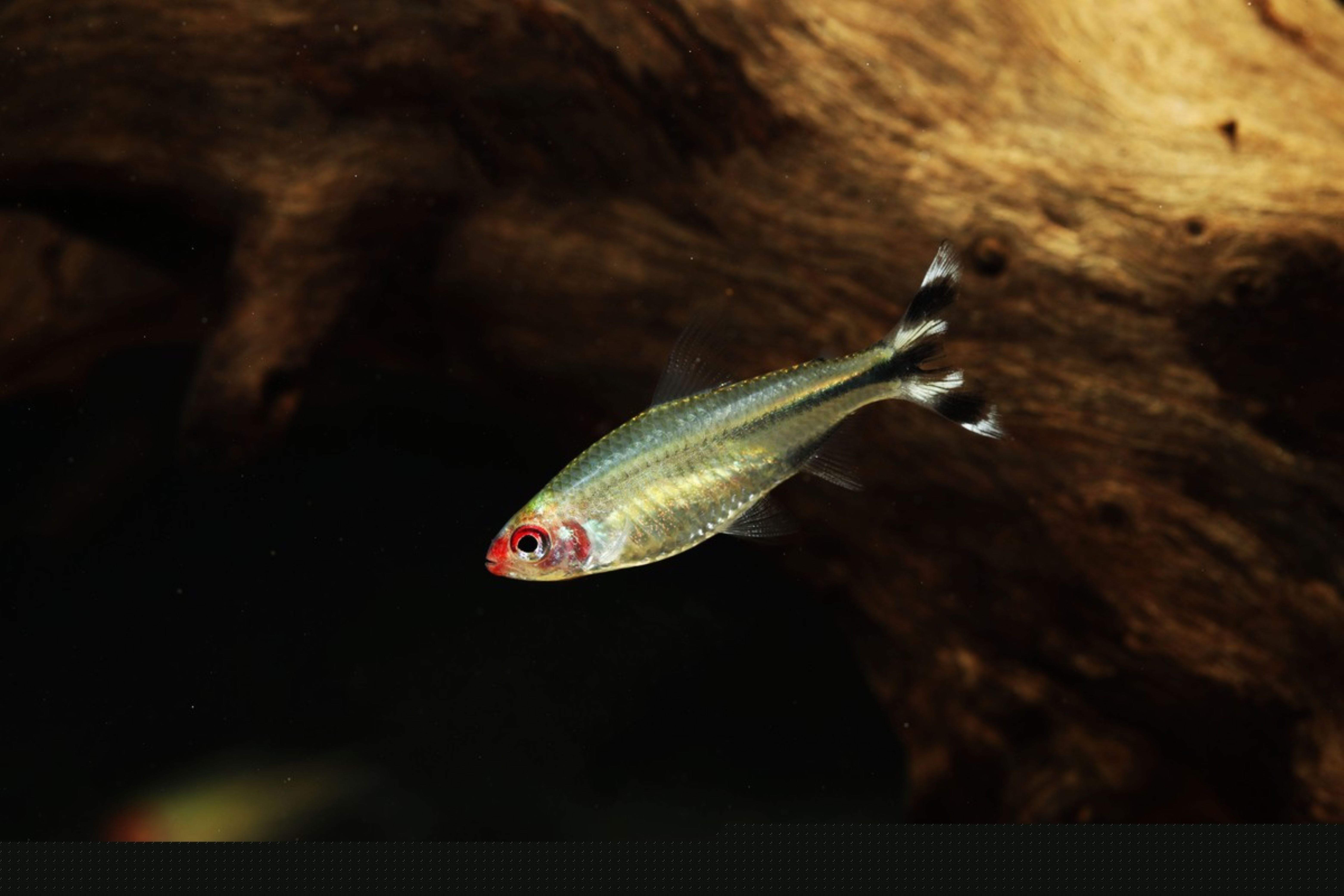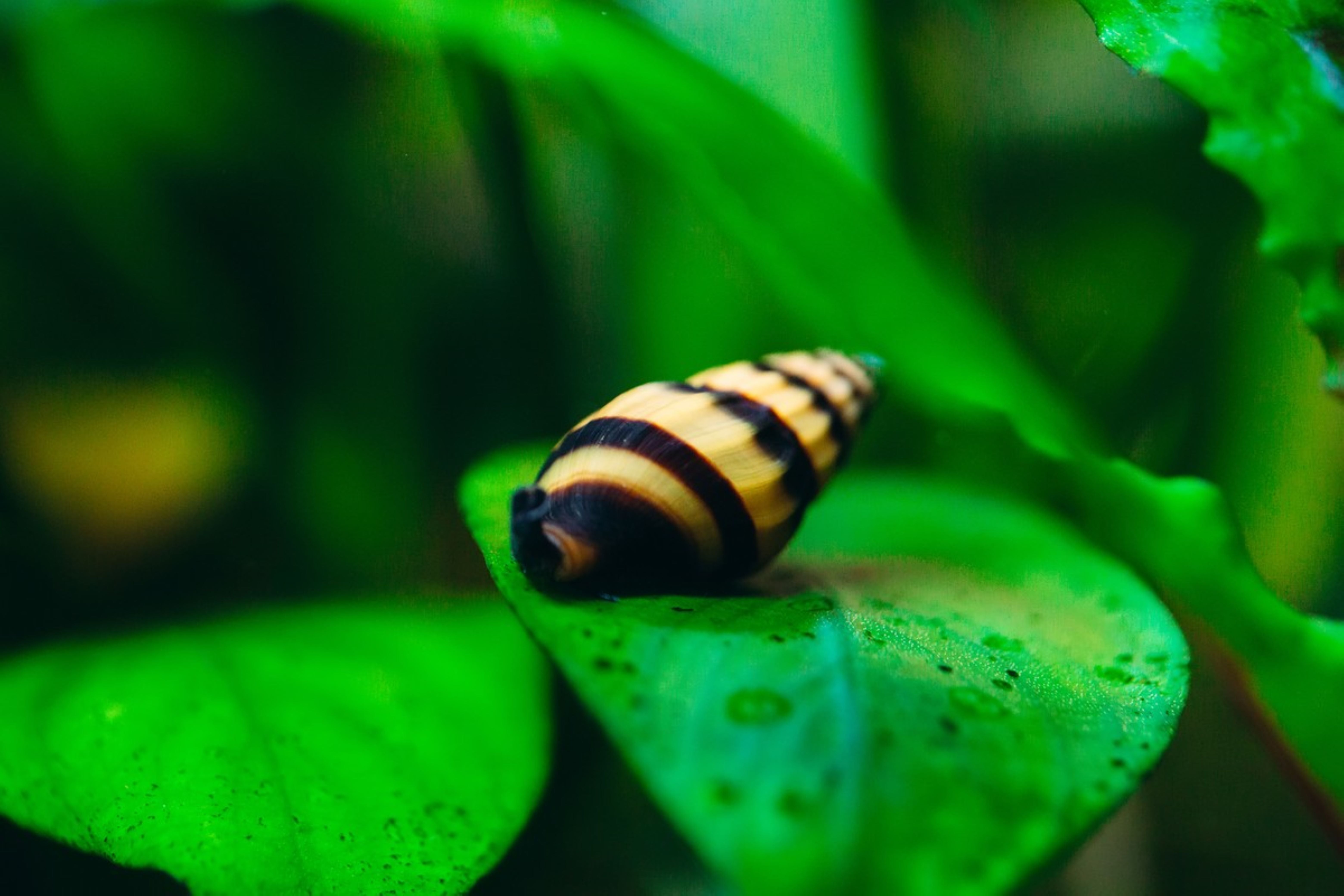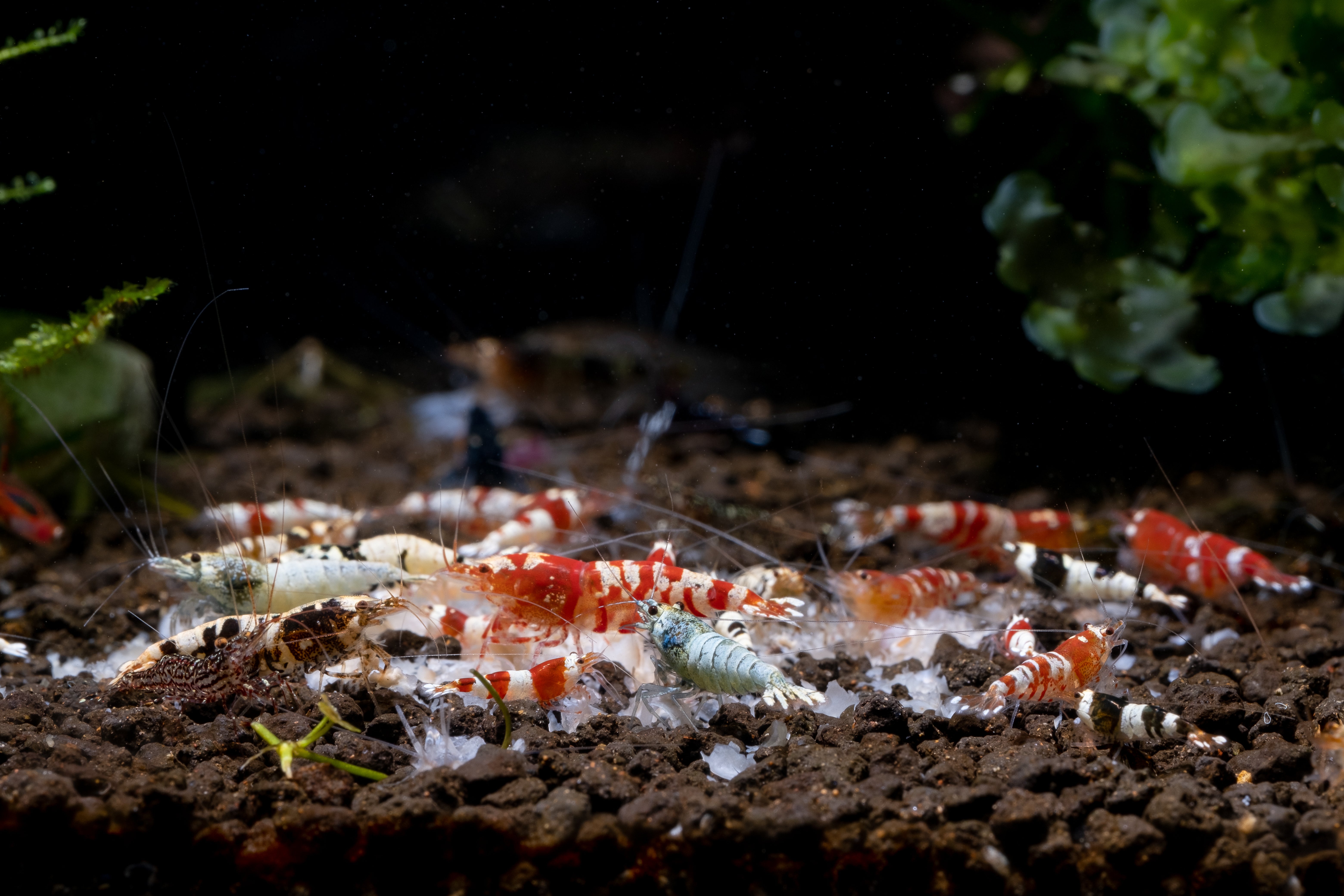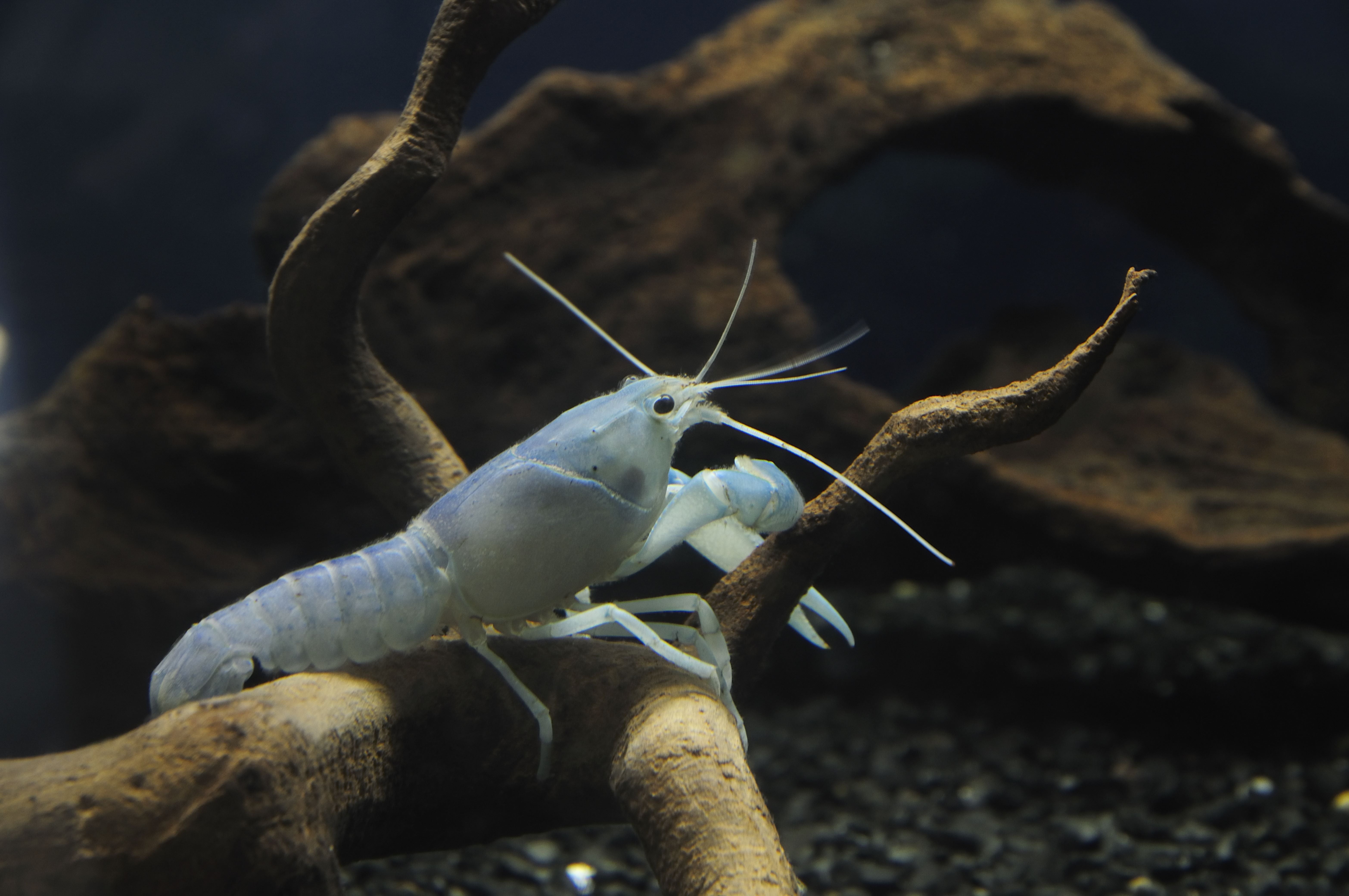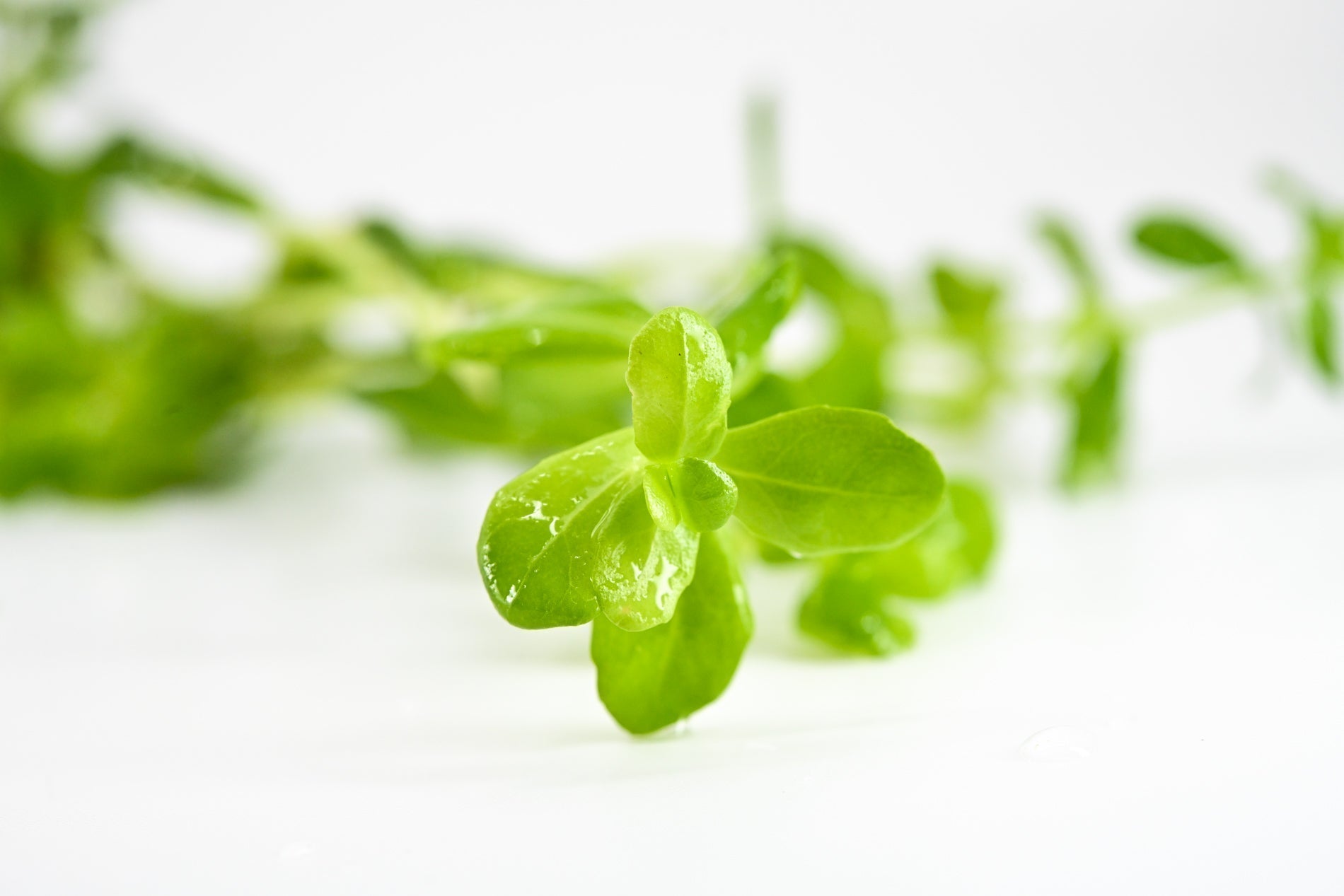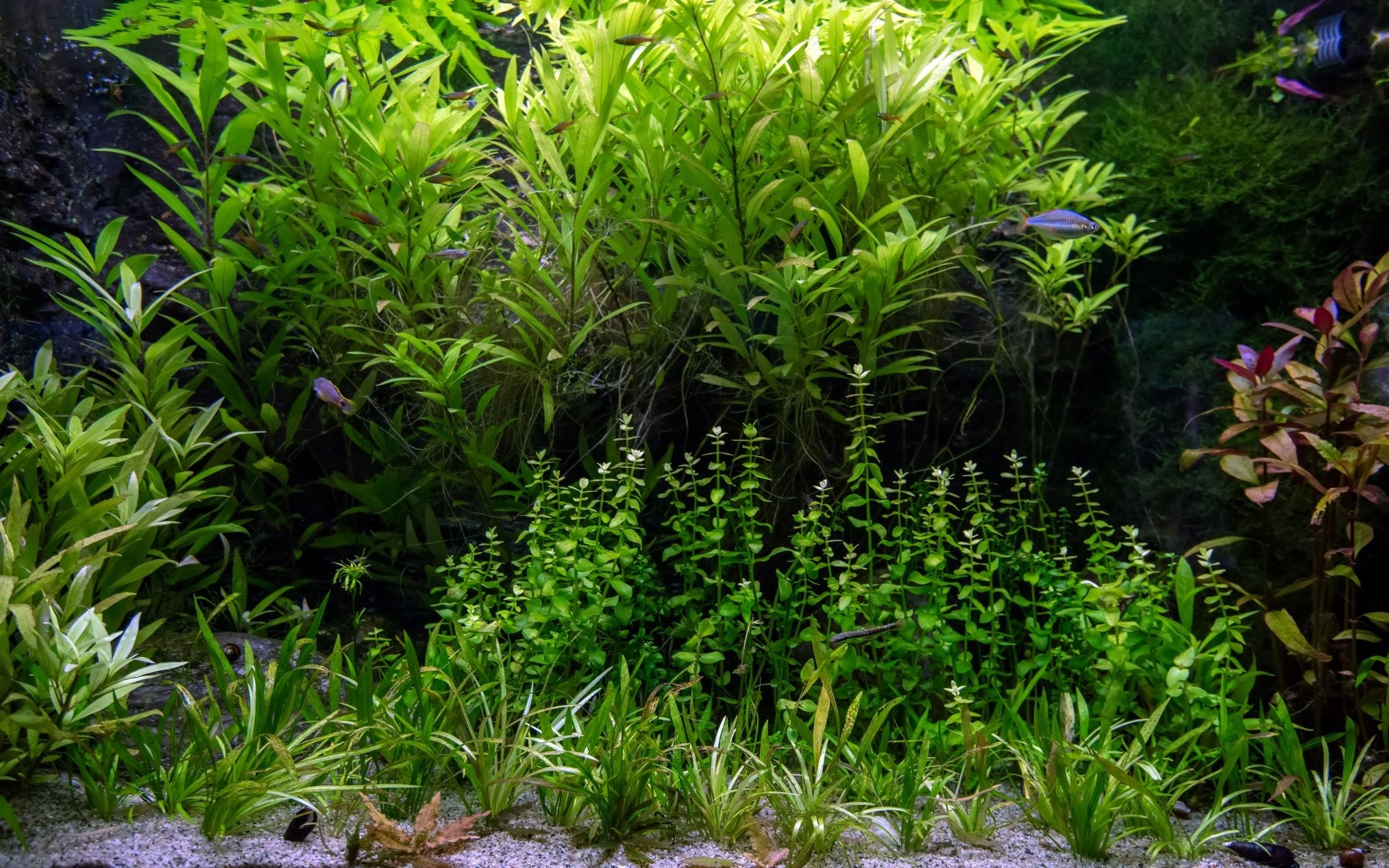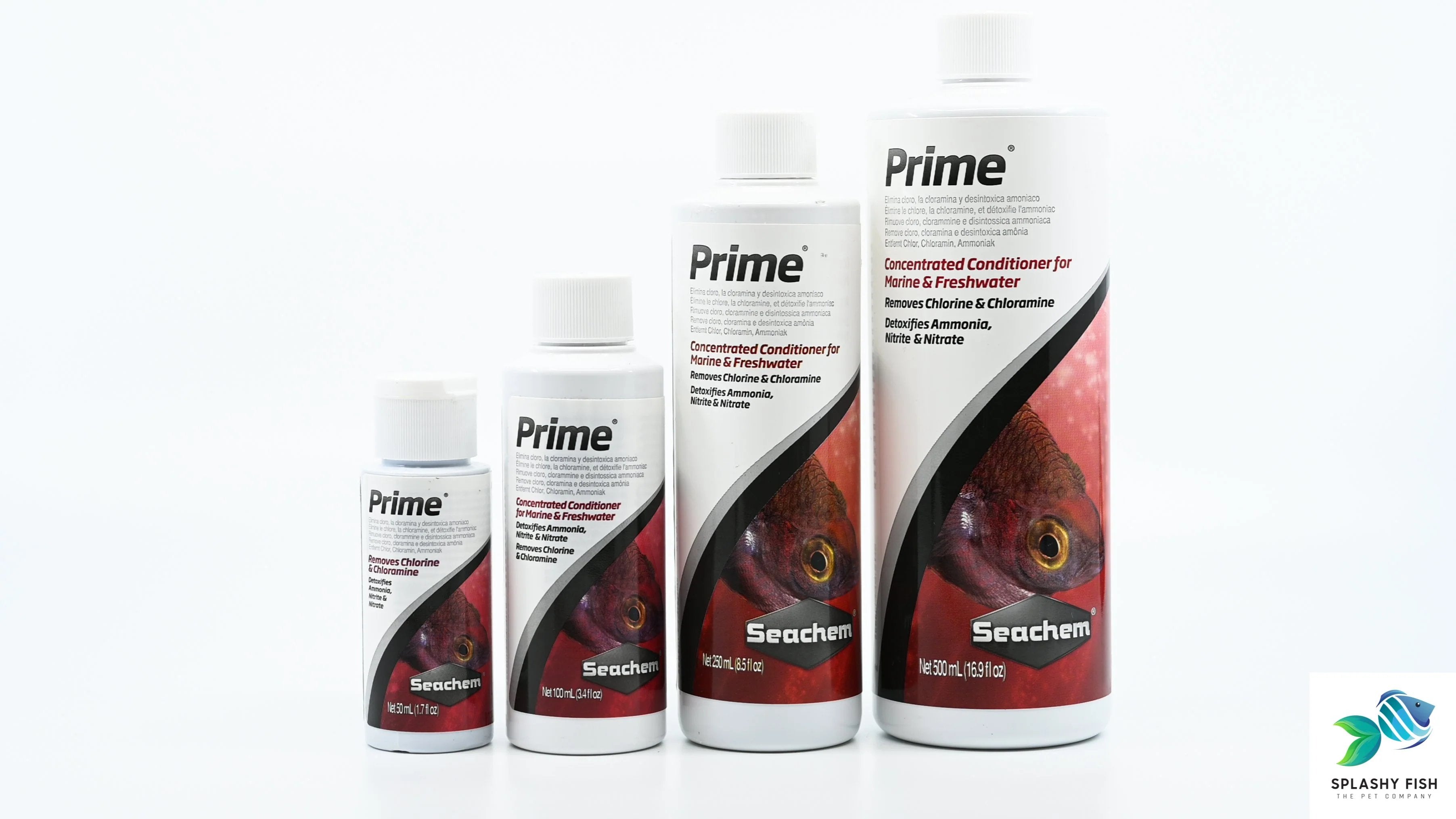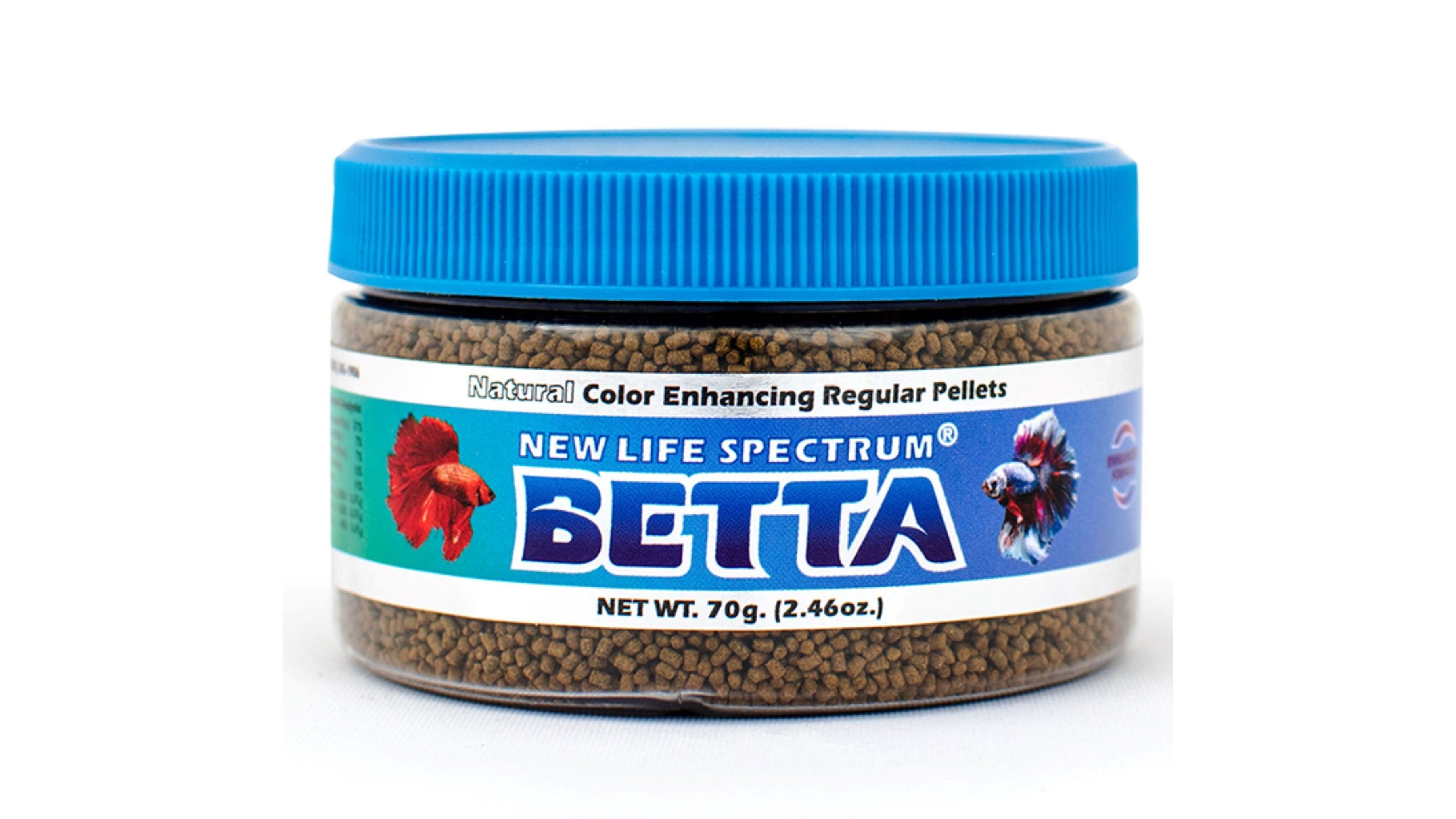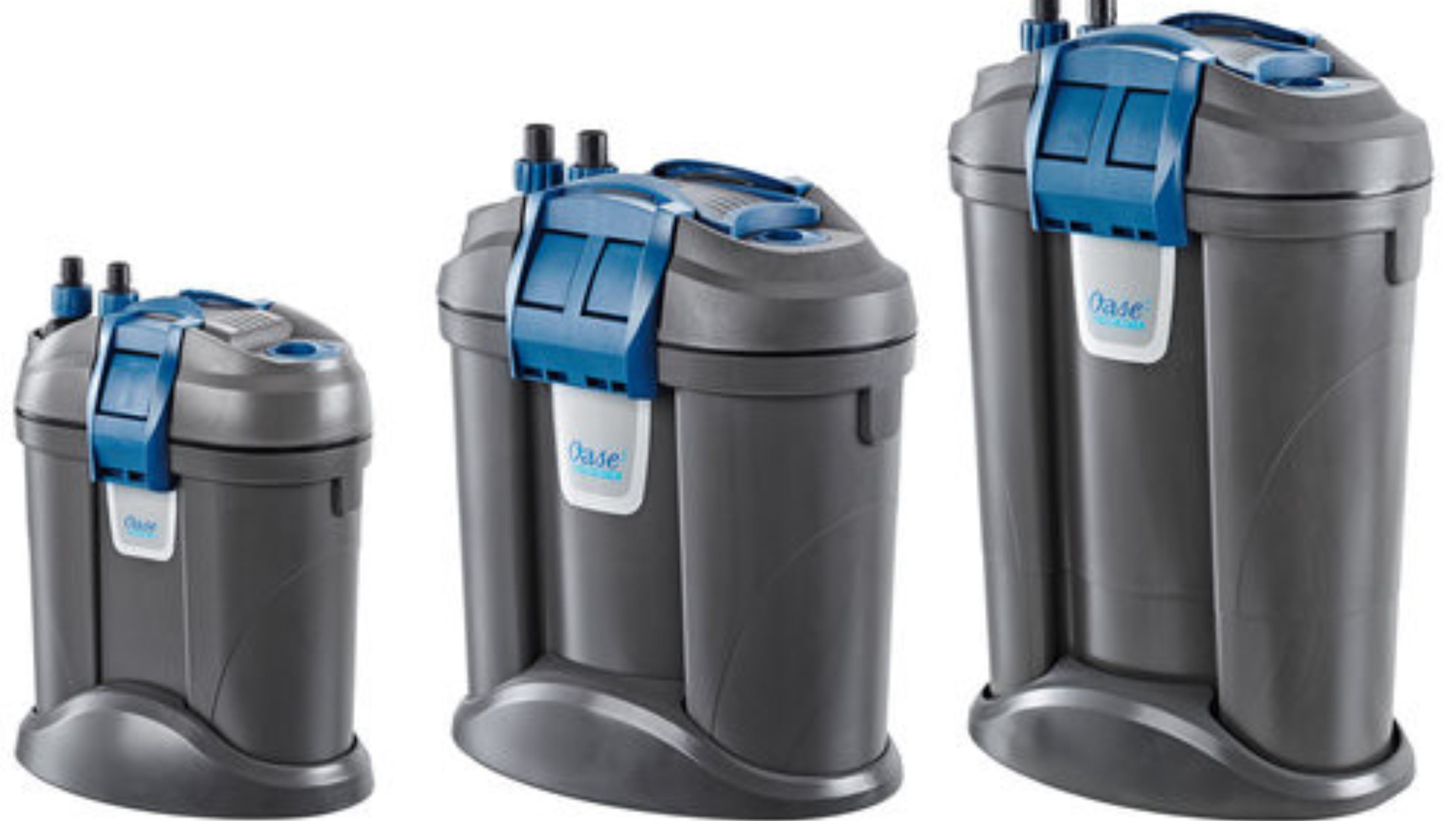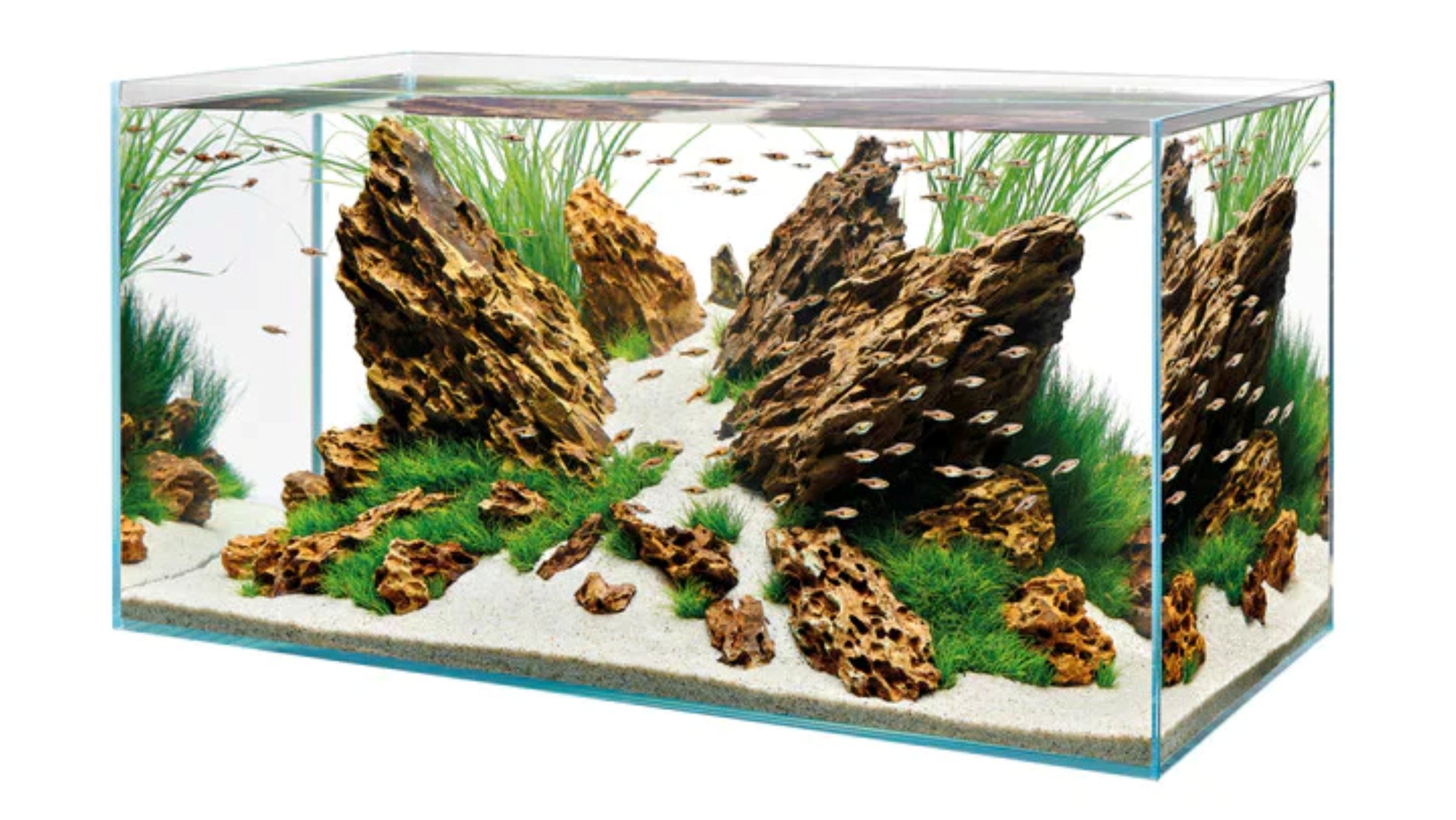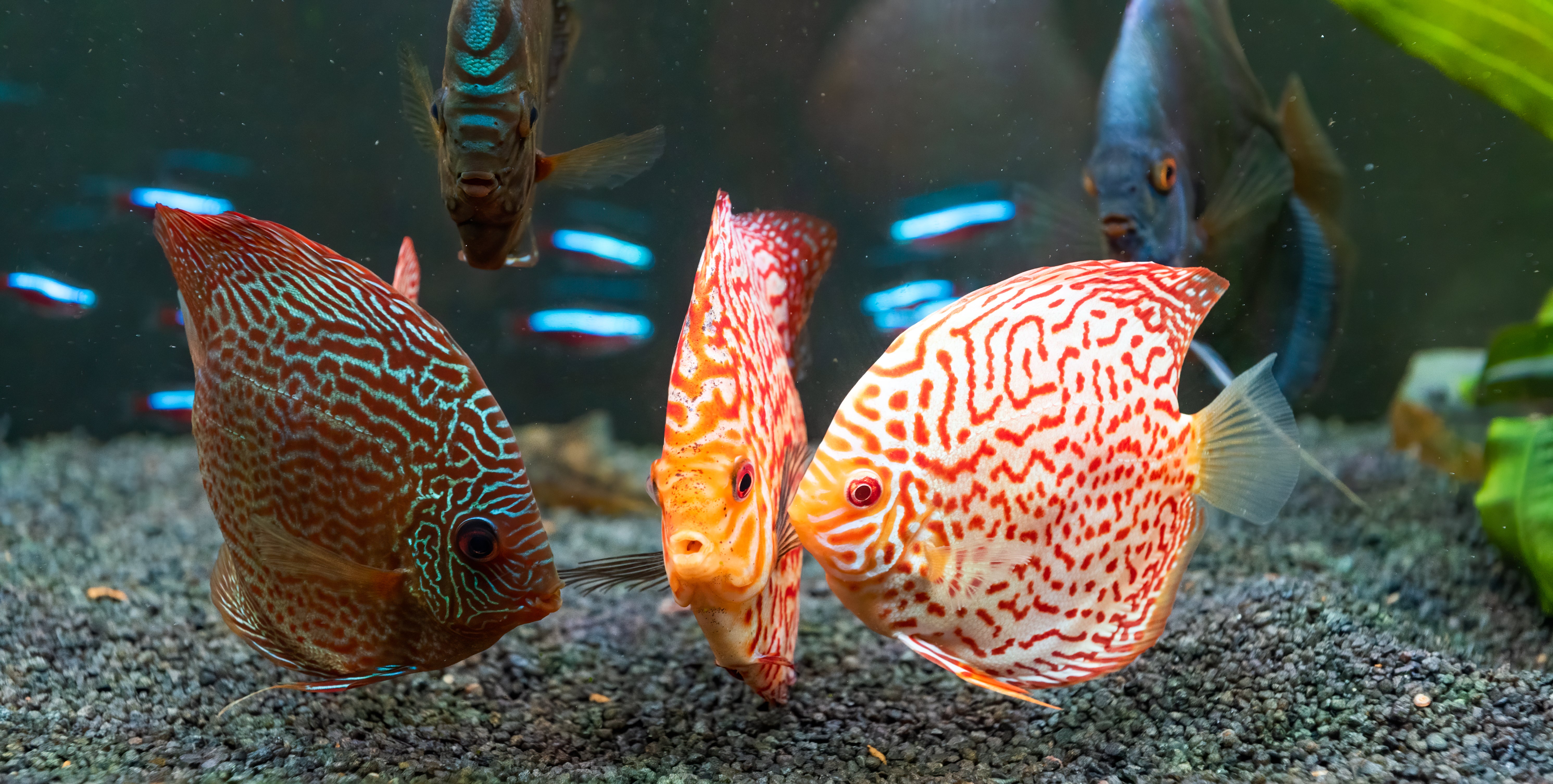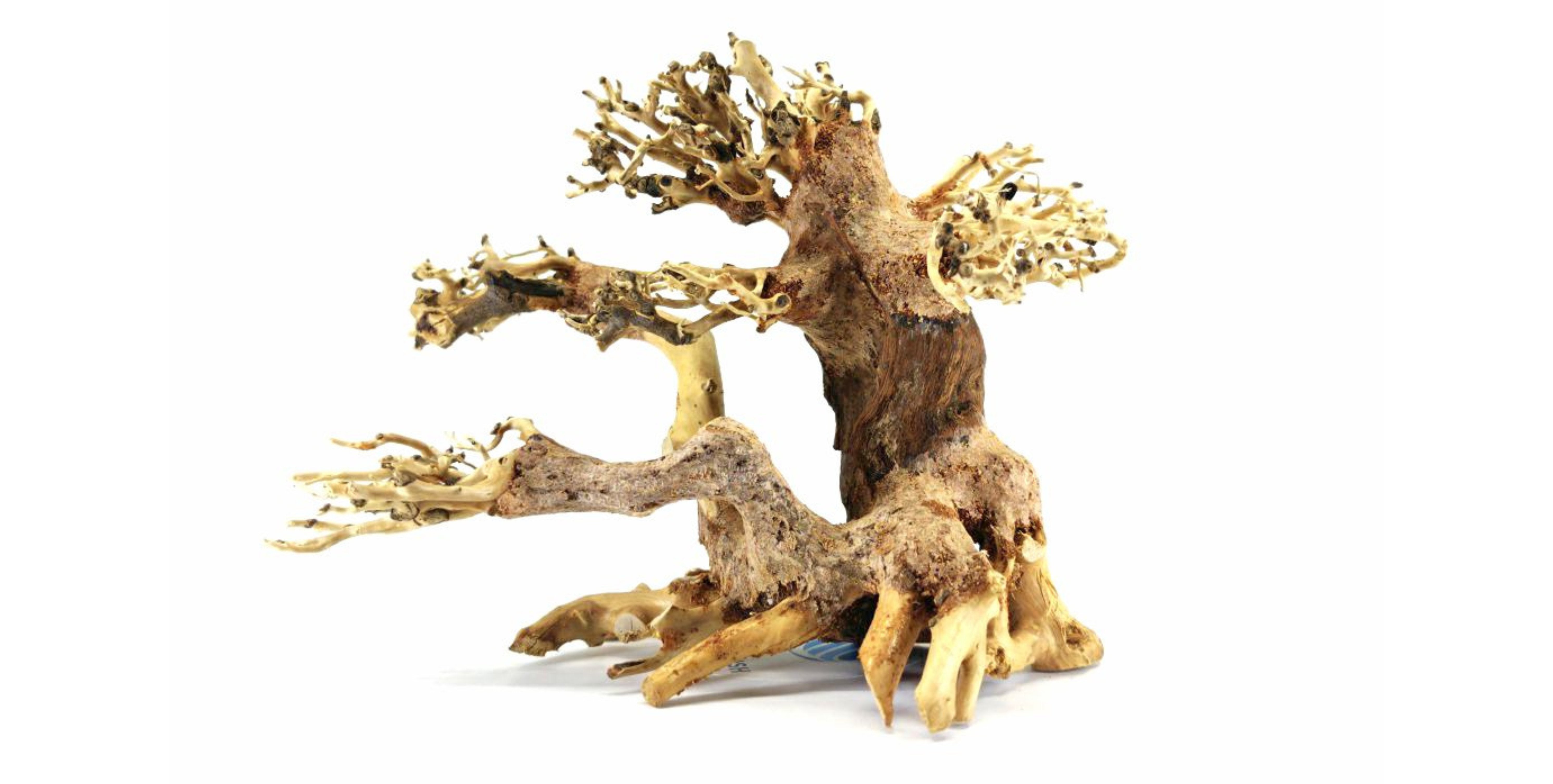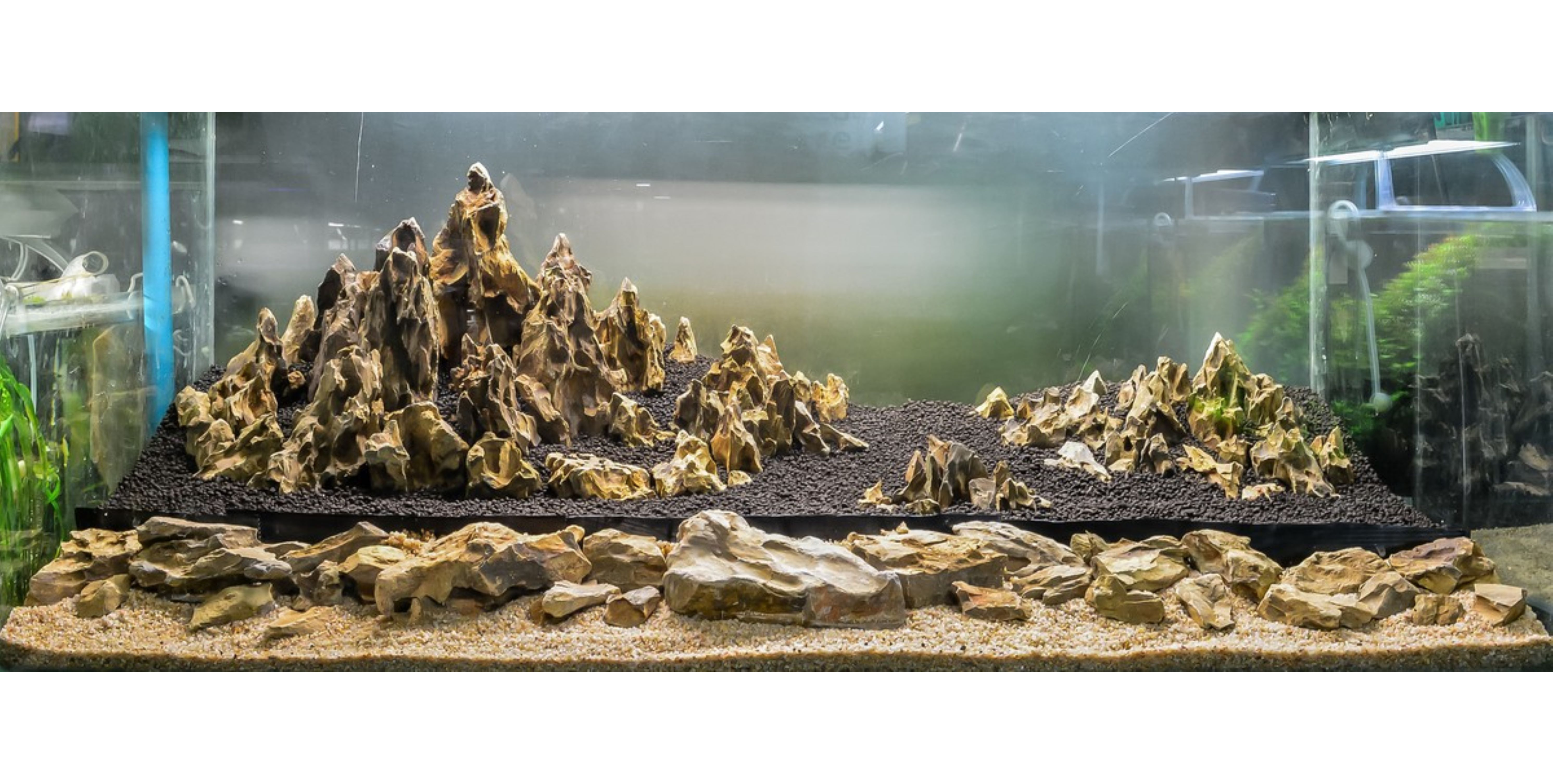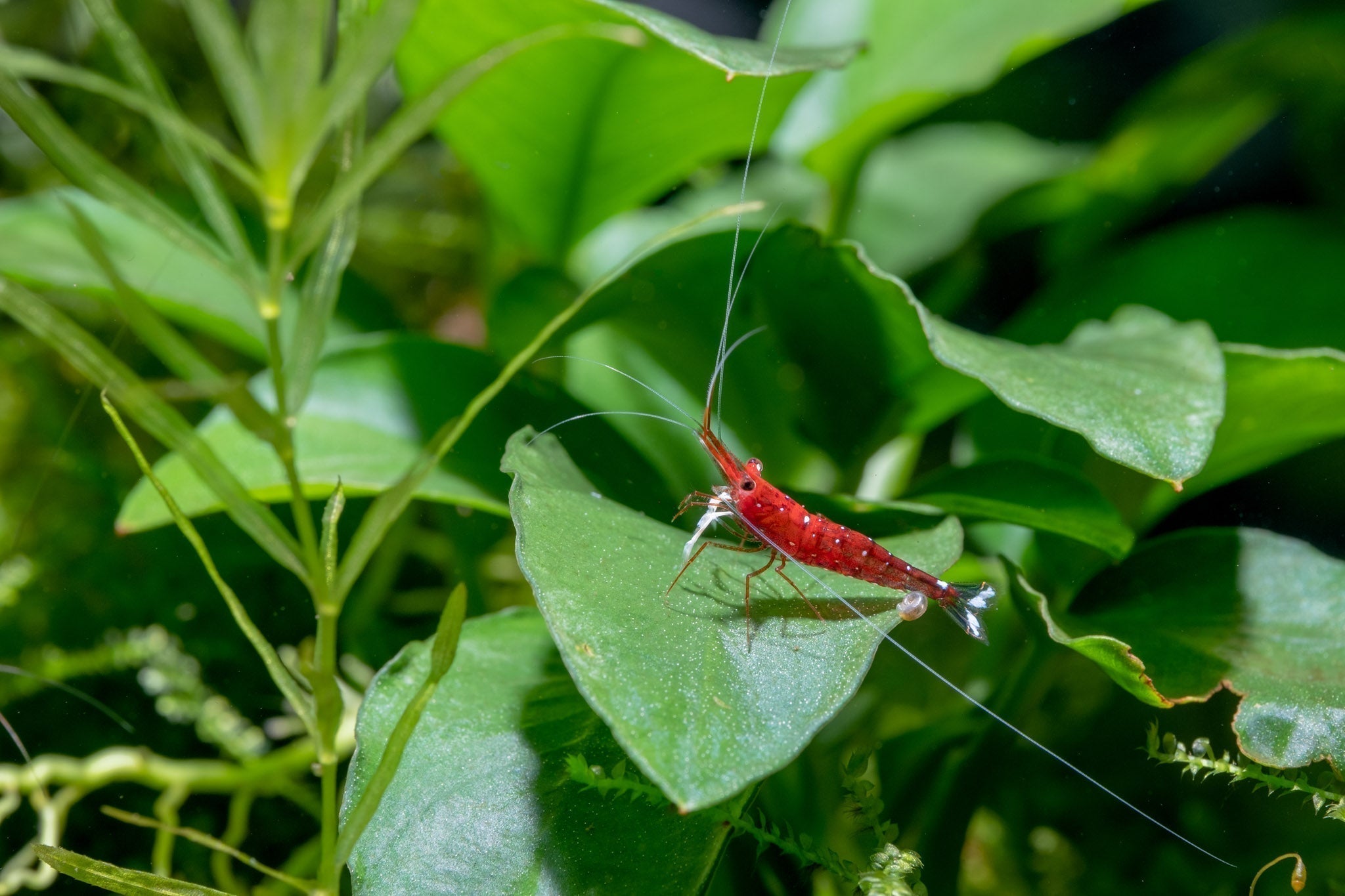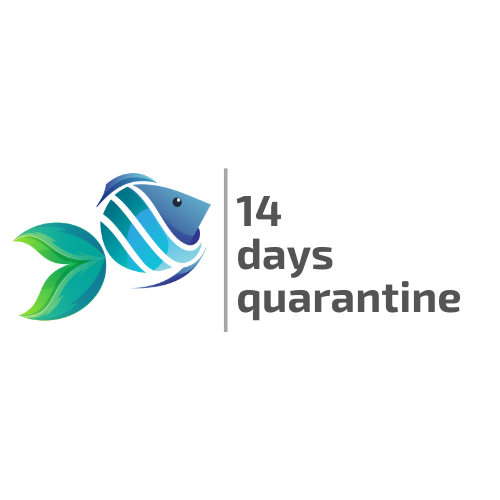Table of Contents
Sulawesi shrimp is a real challenge to every aquarist, even when they are already the masters of shrimp-keeping. This is because this freshwater shrimp is native to the distinctive wild habitat, where ‘unique’ biodiversity exists and water conditions are unlikely to fluctuate. Hence, the first and most important note to take before delving into the care guide for Sulawesi shrimp is that this type of shrimp is not an ideal recommendation for beginners.
General Information and Appearance
Sulawesi shrimp refer to Caridina dennerli (scientific name) species. Its color appearance varies yet tends to be dark and bold with bright patterns. The freshwater shrimp are relatively small, only reaching an inch in length once mature. Therefore, a minimum tank of at least 10 gallons can keep the shrimp very well. However, since the shrimp’s wild habitat is regarded as distinctive, which is difficult to replicate and maintain stably in a home aquarium, it would be wiser if their tank size were something larger.
Sulawesi shrimp, as the name suggests, is native to Sulawesi island, Indonesia. The area of the world is well known for its distinctive biodiversity, where lakes are home to many brightly-colored shrimp. More importantly, its natural habitats, especially aquatic environments, are almost stable and unchanged. This hints at the sensitivity of the shrimp to any (even small) changes in their living conditions, at the same time, demanding the high capability of seasoned aquarists in dealing with the tank setup and maintenance.

Image of Cardinal Sulawesi shrimp
Interesting facts: Discovered in 2007, Sulawesi shrimp has become popular in the shrimp-keeping community in just a short time. Despite being finicky in terms of care, Sulawesi shrimp are one of the most desired species thanks to their impressive appearance. Yet, sadly speaking, several Sulawesi shrimp species are listed as endangered species on the IUCN Red List, mainly because of increasing water pollution. That is also the primary reason threatening the wild Sulawesi shrimp’s existence as well as affecting the price one has to pay for keeping such a ‘precious gem’.
Common Types of Sulawesi Shrimp
The dwarf Sulawesi shrimp has many variants, and fortunately, almost all variants require similar living conditions, from the warmth to tank parameters to even diets. If a difference must exist, it is probably the purchase price. Those that are considered common in the aquarium market (like Cardinal Sulawesi shrimp) are found to be cheaper than those rare (such as Blue Ghost Sulawesi shrimp).
Cardinal Sulawesi Shrimp
Above all, Cardinal Sulawesi shrimp are the most common in the aquarium trade. With a striking dark red (merely a brick hue) body and white tiny dots that emerge randomly, it is not exaggerated to say Cardinal Sulawesi shrimp are the focal point of your aquarium.
Blue Ghost Sulawesi Shrimp
A combination of dark, bold blue and black colors is what most people will notice in this species. Blue Ghost Sulawesi shrimp is also an expensive Sulawesi shrimp species, according to online stores data.
Tigris Sulawesi Shrimp
Tigris Sulawesi shrimp define themselves with two-colored stripes: dark red and white, or brown and white, resembling the tiger-like patterns. Observing the shrimp from a relatively far distance, Tigris Sulawesi may look like tiny candy canes.
Galaxy Sulawesi Shrimp
Being given such a name mainly because the shrimp's appearance and galaxy appear to be very much alike. A black body with white or light blue spots is the feature of the Galaxy Sulawesi shrimp. When arranging the shrimp tank, it is highly recommended to use bright items so that Galaxy Sulawesi shrimp can display their optimal color.
Set Up and Maintain A Sulawesi Shrimp Tank
Tank Size
As a species native to ancient lakes, Sulawesi shrimp require a well-cycled tank environment with stable parameters to survive. Although these freshwater shrimps are of dwarf size, it would be better to stick to a large tank aquarium (above 10 gallons). As a good rule of thumb, the bigger the fish tank is, the more stable and easier the water indicators are and can be controlled.
Notes: It is worth noting that Sulawesi shrimp could do just alright with a 10-gallon tank. However, in that case, you have to check the water quality regularly to ensure the indicators meet requirements. Besides, water changes cannot be neglected (which also need to be carried out frequently). Yet, the large amount of water to be changed at a time, the highly likely shock and stress your shrimp may feel. Eventually, Sulawesi shrimp are easily prone to diseases and illnesses.
Substrates
Sulawesi shrimp are often shy when first introduced into a new environment. Hence, setting up the tank that replicates their natural environments is highly encouraged to help your shrimp soon get accustomed to the new surroundings. To do so, you will need a dark, carbonate-rich soil/substrate and rocks. Choose the rock that has a relatively large surface area for algae to grow on, as Sulawesi shrimp normally favor such life-forms. Adding some live aquatic plants is also recommended. This helps enhance the natural effect of your tank. Anubias Plants are not a bad choice for creating an appealing Cardinal Sulawesi shrimp tank.
Aquarium Supplies
Once finished sketching the aquascape for your shrimp tank, you then need to equip it with aquarium devices. They are a must-have addition to assist you in controlling the water parameters as well as monitoring the living environment to meet the shrimp’s requirements. Heater, filter, and air pump are the basic ones. Most Sulawesi shrimp demand the warm temperature range of 77 - 84°F (25o - 28°C) (with an ideal temperature point of 82°F), which is hardly kept constant if lacking an aquarium heater. The same is applied to the filter; the device, to a certain degree, could remove and filter the waste existing in the shrimp tank. Meanwhile, an air-pump would boost the oxygen circulation, benefiting the shrimp's conditions and ecosystem.
Sulawesi Shrimp Tank Parameters
Also, pay more attention to water parameters. Sulawesi shrimp are not the species that will accept an average tank. They strictly rely on the distinctive living environment, which is difficult to resemble exactly to a home fish tank. Despite the fact, many skilled aquarists have found the following indicators to be appropriate for the shrimp.
- Ammonia and Nitrite: 0 ppm
- Nitrate: less than 20 ppm
- GH: 6-8 dGH
- pH: 7.8 – 8.2
- Temperature: 77o - 84oF (25o - 28oC) (with ideal temperature point of 82oF). Do not go for anything below
- Water change: subject to the water quality that small and regular water changes should be performed. Mind that a frequent and large amount of water removal or input at once could stress the shrimp to death.
Water Quality
In addition, be careful with the water source you use for the shrimp tanks, especially in the case of Sulawesi shrimp. Sensitive and expensive as they are, we recommend you do not risk using tap water. Instead, you should run the water through a reverse osmosis process for the cardinal shrimp tank so the water quality could be as close as possible to natural water environments.
Get yourself the water testing kit and test your Sulawesi shrimp tank water frequently to ensure everything is under control and the parameters meet the standard.
If you find the cardinal shrimp too difficult to keep, you still have many other options. Red Cherry Shrimp could not be more perfect for consideration.

Sulawesi Behavior and Temperament
If everything goes right, your Cardinal Sulawesi shrimp will soon become active members of the aquarium tank and start typical behaviors of most dwarf shrimp species. Cardinal shrimp then spend most of their time scavenging everywhere the substrates, rocks, and aquatic plants for food. Often, you can spot them crawling on the rocks and enjoy foraging for algae.
Cardinal Sulawesi shrimp are peaceful and welcome the presence of other fish/ invertebrates. They are especially excited if their tank mates also come from their native Sulawesi habitats. So long as the freshwater fish or invertebrates you’re going to introduce to the Sulawesi shrimp tank can dwell in similar living conditions and do not threaten the peace of the cardinal shrimp, there is nothing much to worry about a community tank having Sulawesi shrimp.
Notes: As shrimp often tend to be shy in general, it is highly encouraged to keep them in groups, starting with 12-15 specimens (tank size needs to be considered when deciding the right number). This stimulates them to be more active and comfortable in new surroundings.
What Do Sulawesi Shrimp Eat?
You could take relief in this aspect since Sulawesi shrimp are not picky eaters. They eat algae, biofilm, and decaying aquatic plant matter in the wild. Hence, they could eat similar food sources in captivity. Cardinal Sulawesi shrimp are instinctive scavengers and will eat at any time of the day or night. Nonetheless, you may find they prefer to forage at night more frequently than during the day. This could be because cardinal shrimp are quite sensitive to light and may do better with the lights turned off or dimmed.
Be careful of the amount of food you provide your Sulawesi shrimp. Since they are dwarf shrimp, only feed them no more than once a day and do not give them more than they can consume within 2 or 3 hours. Overfeeding or extra leftover food causes lots of trouble when it comes to shrimp’s health and water quality.
Interesting notes: Sulawesi shrimp tank water should have been kept in clean conditions. Yet, interestingly, you are advised not to over-clean your tank. The explanation is simple: algae. Although algae could somehow affect the tank water quality, it is regarded as one of the primary food sources of the Cardinal Sulawesi shrimp to graze on.
Blanched and boiled vegetables are also the most commonly used supplements in cardinal shrimp tanks, especially those raising large colonies. However, when treating them with this kind of food, feed them only with great care. Vegetables could be related to the increase of bacteria in the tank environment (which is unlikely to be found in cardinal shrimp wild habitats), causing harm to the Sulawesi shrimp.

(Image of Sulawesi shrimp)
Sulawesi Shrimp Breeding
Breeding the Sulawesi shrimp is not difficult as long as your tank has a good ratio of males to females. Unfortunately, the problem is the sexing of cardinal shrimp. Even the most experienced aquarists cannot always succeed in working it out with the naked eye.
If the goddess of luck is on your side and your tank environment is in an optimal state, you will soon find that the cardinal shrimp breeding happens naturally. The female Sulawesi shrimp will carry 20 to 30 reddish eggs, and in 20 to 28 days, they will hatch into tiny specimens of the adult shrimp. The babies, given the tank conditions are maintained well, will grow very quickly and display the coloration similar to the adult cardinal shrimp.
Conclusion
Sulawesi shrimp are a fun and fascinating species in shrimp-keeping. With a longevity of up to 2 years and various color appearances compared to other dwarf shrimp, it is hard to resist one’s temptation of having the shrimp in their tanks.
At Splashy Fish Store, we supply a wide range of tank-bred Sulawesi Shrimp for sale and other freshwater shrimp for sale, which come from reliable sources. We further guarantee that all of our Cardinal Sulawesi shrimp will go through the quarantine process for 14 days before sale. We care about the quality and strive to provide you with the best we can. Visit our store to buy them online or at our aquarium store in Virginia for more betta fish for sale, freshwater fish for sale, aquarium plants for sale, and aquarium supplies.
Sulawesi Shrimp Frequently Asked Questions (FAQs)
Are Sulawesi shrimp easy to keep?
Sulawesi shrimp are not the easiest shrimp species to keep and are best suited for experienced aquarists. Unlike Neocaridina or Caridina shrimp, Sulawesi shrimp require very stable water conditions, high temperatures (around 78-84°F), and alkaline pH levels (7.8-8.2). They are highly sensitive to sudden changes in water parameters and cannot tolerate poor water quality or fluctuating conditions. To successfully keep Sulawesi shrimp, you’ll need a mature, cycled aquarium with excellent filtration, zero ammonia/nitrite, and soft lighting to replicate their natural environment. While they’re stunning and rewarding to keep, beginners may find their care a bit challenging.
How long can Sulawesi shrimp live?
Sulawesi shrimp can live between 1.5 to 2 years when kept in optimal aquarium conditions. Their lifespan greatly depends on stable water parameters, proper diet, and low stress levels. Factors such as temperature fluctuations, poor water quality, or aggressive tank mates can significantly shorten their life expectancy. If provided with a well-maintained, Sulawesi-specific tank setup - featuring warm, alkaline water and minimal disturbances - these shrimp can thrive and even breed in captivity, extending their healthy lifespan.
Can Sulawesi shrimp live with other shrimp species?
In most cases, Sulawesi shrimp should not be kept with other shrimp species, especially those that prefer different water parameters like Neocaridina or Caridina shrimp. Sulawesi shrimp require high pH and warm temperatures, while most other shrimp thrive in more neutral or slightly acidic conditions. Mixing species with different environmental needs can result in stress, illness, and poor survival rates. Additionally, crossbreeding is not possible between Sulawesi shrimp and other genera, and competition for food or space may also arise. For the best results, keep Sulawesi shrimp in a species-only tank designed to replicate their native habitat in the lakes of Sulawesi, Indonesia.


